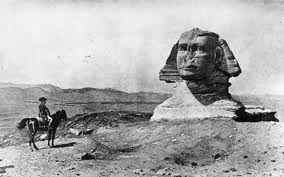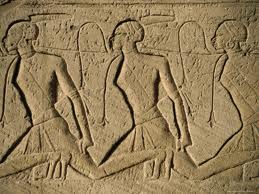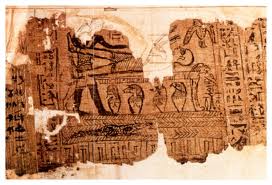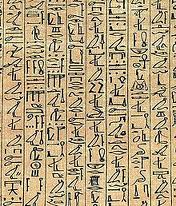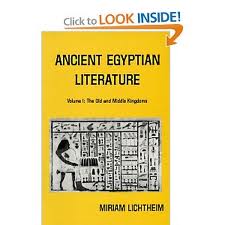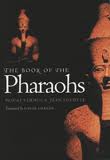- Latest Archaeology Updates
- Importance and applicability
- Famous Archaeologists
- Museums Collections
- Site Map
- World Heritage Sites
- World History Monuments
- Archaeological Organizations
- World Atlas of Archaeology
- Forensic Investigation and Geophysics
- Contact Us
- Movies based on Archaeology
- Frequently Asked Questions
- Archaeological discoveries
- Tell a Friend
- Archaeological Abbreviations
- Gallery Collections
- Famous-Museums site map
- Famous-archaeologists site map
- Archaeological Monuments site map
Egyptology is an interdisciplinary academic field that focuses on all aspects of ancient Egyptian culture, from its history and literature, to its art and architecture. It covers a wide range of topics, including language, religion, politics, and daily life. The study of Egyptology can be traced back to the early 19th century when Napoleon Bonaparte's expedition to Egypt sparked an interest in the ancient country's culture and history. Since then, scholars and researchers from around the world have worked to uncover the secrets of the ancient Egyptians. Egyptologists use a variety of techniques to uncover information about the past.
These include archaeological excavation, which involves digging in the ground to uncover artifacts and monuments, and textual analysis, which involves analyzing ancient texts to gain insight into Egyptian culture. They also use scientific methods such as radiocarbon dating, paleography, and DNA analysis to determine the age and origin of artifacts and monuments. In addition to traditional archaeological and textual methods, Egyptologists also use art and architecture to learn more about the ancient Egyptians.By studying the paintings and sculptures found in tombs and temples, they can gain insight into the beliefs, values, and customs of the people who created them. Egyptology is an ever-evolving field that continues to provide new insights into the culture and history of ancient Egypt. The field has come a long way since Napoleon first sparked an interest in the country's past, and today it is a thriving and ever-expanding field. It is a field that has been very beneficial to archaeologists, historians, and other scholars around the world in understanding the past. By studying the culture, beliefs, and customs of the ancient Egyptians, we can gain a better understanding of our own history and culture. Egyptology is an important field that has greatly contributed to our understanding of the past and will continue to do so in the future.
Ancient Egyptian Art and Architecture
Ancient Egyptian art and architecture is one of the most important and influential forms of art and architecture known to mankind. From the Great Pyramids of Giza to the tombs and temples of the Valley of the Kings, the monuments of ancient Egypt have changed the way we think about art and architecture.The ancient Egyptians were master builders, creating monuments that have lasted for thousands of years. The most famous of these is the Great Pyramid of Giza, which is the last remaining wonder of the ancient world. The pyramid was built around 2560 BC, and is the oldest and tallest of the pyramids at Giza.
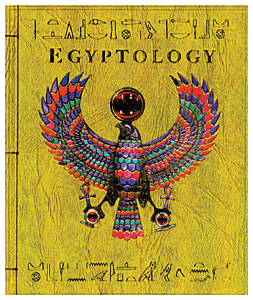
The monuments of ancient Egypt have had a lasting impact on the world. Many of their designs have been adapted and used in modern architecture. For example, the obelisk, a tall, thin, four sided stone pillar, was used by the ancient Egyptians to symbolize the sun god Ra, and is now found in many cities around the world. The ancient Egyptians also used columns and arches in their buildings, which are now seen in many public buildings around the world. The art of ancient Egypt was also influential. The paintings and sculptures of this era were used to tell stories and depict gods and rulers. The ancient Egyptians were also famous for their hieroglyphs, which were used to write down important information. In conclusion, ancient Egyptian art and architecture has had a lasting impact on the world. From the Great Pyramid of Giza to the Valley of the Kings, the monuments of ancient Egypt have changed the way we think about art and architecture.
Egypt's Royalty: Pharaohs and Queens
Pharaohs
The pharaohs of Ancient Egypt were the most powerful rulers at the time, and were seen as living gods by their people. The title of pharaoh was passed down from father to son, and the pharaohs were responsible for all matters concerning the state, including religious and military affairs. Some of the most famous pharaohs include King Tutankhamun, Ramses II, and Cleopatra VII.
Queens
In addition to the pharaohs, Egypt also had female rulers known as queens. The most famous of these is Cleopatra VII, who famously allied with Julius Caesar and Mark Antony during the Roman Empire. Other notable queens include Hatshepsut, Nefertiti, and Merneptah. Queens in Ancient Egypt were often seen as symbols of power, and their reigns were often portrayed in art and literature.
Ancient Egyptian Technology and Inventions

1.Papyrus: Egyptians invented papyrus, a paper-like material made from the papyrus plant, which was used to create scrolls and codices.
2.Irrigation: Egyptians developed an efficient system of irrigation to bring water from the Nile River to their crops.
3.Sailing: Egyptians invented the sailboat, which enabled them to travel up and down the Nile and across the seas.
4.Pyramids: Egyptians built the great pyramids of Giza with precision and skill.
5.Medicine: Egyptians developed advanced medical treatments, including surgery and the use of herbs and plants to heal the sick.
6. Writing: Egyptians invented hieroglyphics, a system of writing that is still used today.
7. Mathematics: Egyptians developed a system of mathematics that included geometry, algebra, and trigonometry.
8. Astronomy: Egyptians studied the stars and developed a calendar based on lunar cycles.
9. Building: Egyptians used mud bricks, limestone blocks, and other materials to construct their monuments and buildings.
10. Metallurgy: Egyptians developed advanced metalworking techniques that enabled them to create tools, weapons, and jewelry.
Development of the field Egyptology Contains
The first Egyptologists were explorers, scholars, and adventurers who were fascinated by the ancient Egyptian civilization. They studied the ruins, artifacts, and texts left behind by the ancient Egyptians. Early Egyptologists included Jean-Francois Champollion, who deciphered the hieroglyphs, Karl Richard Lepsius, who documented many of the monuments in Egypt, and Flinders Petrie, who developed a scientific method for dating artifacts. Other early Egyptologists included Gaston Maspero, who excavated many of the tombs in the Valley of the Kings, Howard Carter, who discovered the tomb of Tutankhamen, and James Henry Breasted, who developed the chronology of ancient Egyptian history. The work of these early Egyptologists laid the foundation for the modern study of Egyptology.
The Graeco-Roman period was a time of cultural and political change in the Mediterranean world, marked by the rise of Rome and its eventual domination of the region. It saw the development of a unified Greco-Roman culture and the spread of Hellenistic ideas throughout the Mediterranean. It was also a time of great advances in literature, philosophy, art, and architecture. The period was marked by a number of wars, like the Punic Wars, and the expansion of the Roman Empire, which eventually became the most powerful political entity in the world.
Egyptology is a vibrant field of study and is home to many Muslim Egyptologists. These scholars bring their diverse cultural backgrounds and perspectives to the study of ancient Egyptian history, culture, and art. Their contributions to the field range from research and excavation to teaching and writing. Muslims have made significant contributions to the study of Egyptology, including the discovery of the Valley of the Kings, translations of hieroglyphic inscriptions, and uncovering the mysteries of the ancient Egyptian civilization. Many of these scholars have dedicated their lives to the pursuit of knowledge and have helped to shape the modern field of Egyptology.
European exploration of the world began in the 15th century when Portuguese and Spanish explorers set sail in search of new lands and riches. Christopher Columbus, an Italian explorer sailing for the Spanish Crown, reached the Caribbean Islands in 1492. Other explorers, such as Vasco da Gama and Ferdinand Magellan, were the first to sail around the world. The voyages of the British explorer, James Cook, to the Pacific Ocean in the late 18th century greatly expanded European knowledge of the region. Dutch navigator Abel Tasman discovered Tasmania and New Zealand in the early 17th century, while French explorers Louis Joliet and Jacques Marquette discovered the upper Mississippi River and the Great Lakes. British explorer and trader, David Livingstone, explored much of Africa in the mid-19th century. Later, Robert Peary became the first explorer to reach the North Pole in 1909. In the 20th century, Roald Amundsen became the first person to reach the South Pole in 1911.
Egyptology is the study of ancient Egypt, from the Predynastic Period, circa 4000 BC, to the end of the Roman period in 395 AD. It includes the study of ancient Egyptian language and literature, history, archaeology, art and architecture, religion, and daily life. Egyptologists use a range of sources, including inscriptions, papyri, tomb paintings, statuary, and mummies, to reconstruct the lost civilization of ancient Egypt. It has become an important field of study for its insight into the history and culture of the ancient world, and its influence on modern society.
The Influence of Ancient Egypt on Modern Society
The ancient civilization of Egypt has had a huge influence on modern society. From the pyramids to hieroglyphics, the influences of ancient Egypt are seen throughout the world today. Some of the most influential aspects of ancient Egyptian culture to modern society include their language, their architecture and their religion.
The ancient Egyptian language, known as hieroglyphics, is still used today. While the language has been adapted over the centuries, many words, terms, and symbols are still used in modern society. For example, the eye of Horus is still a popular symbol of protection.
The architecture of ancient Egypt is also seen in modern society. The pyramids of Giza are one of the most iconic symbols of Egypt and are still visited by people from all over the world. Similarly, the temple complex of Luxor is also a popular tourist attraction.
Finally, ancient Egyptian religion has had a lasting impact on modern society. The concept of life after death, which was a core belief of the ancient Egyptians, is still a popular belief in many parts of the world today. Similarly, the concept of mummification, or the preservation of the dead, is still practiced in some parts of the world.
Overall, the ancient civilization of Egypt had a huge influence on modern society. From language to architecture to religion, the influence of ancient Egypt is still seen in many aspects of our lives today.
Where to Study Egyptology
1. American University in Cairo: Located in Egypt, this university offers a wide range of courses in Egyptology, including courses in archaeology, art and architecture, language, literature and religion.
2. University of Chicago: Located in the United States, the university offers a world-renowned Egyptology program, including courses in ancient Egyptian language and culture.
3. University of Cambridge: Located in the United Kingdom, the university offers Egyptology courses that include courses in ancient Egyptian language, art and architecture, and history.
4. University of Oxford: Located in the United Kingdom, the university offers a wide range of courses in Egyptology, including courses in archaeology, art and architecture, language and literature, and religion.
5. Macquarie University: Located in Australia, this university offers Egyptology courses that cover a wide range of topics, including ancient Egyptian language and culture.
Books on the Egyptology:
Ancient Egyptian Literature :
Egyptian literature dates back to the Old Kingdom, with the Pyramid Texts, the earliest form of written literature, which date to 2400 BCE. Other notable works include the Papyrus of Ani, the Coffin Texts, the Story of Sinuhe, the Eloquent Peasant, the Instruction of Amenemope, the Tale of the Shipwrecked Sailor, the Story of Wenamun, the Instruction of Any and the Dialogue of Ipuwer. These works cover a range of topics, from wisdom literature and religious hymns to magical and medical texts. Ancient Egyptian literature is a source of great insight into the lives of the ancient Egyptians and their culture.
The Book of the Pharaohs is an ancient Egyptian text detailing the lives and accomplishments of the pharaohs, from their reigns to their death. It provides a glimpse into the culture, religion, and daily life of the ancient Egyptians, as well as their customs and beliefs. It also serves as a historical record of their rulers and their accomplishments. The text is divided into sections that discuss the pharaohs' accession to power, their relationships with other rulers, their military campaigns, their monuments, and their funerary practices. It also includes information on their religious beliefs, their daily lives, and the various gods and goddesses they worshipped.
Other Resource about Egyptology:
Egyptology in wiki:
Egyptology is the study of Ancient Egypt and its civilization, including language, religion, art, architecture, culture, and history. It is a field of study that originated in the early 19th century and includes a wide range of disciplines, including archaeology, anthropology, history, epigraphy, philology, geology, and chemistry. Egyptology is an interdisciplinary field that draws on many different fields, including anthropology, archaeology, history, philology, and geology. Egyptologists use a variety of sources to reconstruct the history of Ancient Egypt, including artifacts, texts, archaeological remains, and art.-
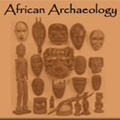
African Archaeology is the study of the history and prehistory of the African continent, as well as its societies and cultures, through the use of archaeological evidence. African Archaeology covers a broad range of topics, from the Stone Age to the present day. -
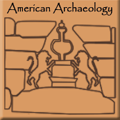
American Archaeology also known as New World archaeology, is the study of the archaeological history and prehistory of the Americas. It is a subfield of archaeology, the study of the human past, which seeks to understand societies and cultures by examining their material culture, such as artifacts and ruins. -
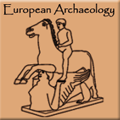 European Archaeology is the scientific study of the material remains of past cultures and societies in Europe, from the Paleolithic period to the present day. It is an interdisciplinary field which draws on the methods and theories of a range of disciplines, including history, anthropology, art history, geography, geology and linguistics.
European Archaeology is the scientific study of the material remains of past cultures and societies in Europe, from the Paleolithic period to the present day. It is an interdisciplinary field which draws on the methods and theories of a range of disciplines, including history, anthropology, art history, geography, geology and linguistics. -
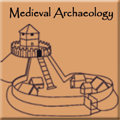
Medival archaeology is a field of archaeology that is primarily concerned with the material remains of the Middle Ages, which is roughly defined as the period from the 5th to the 15th century. -
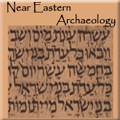
Near Eastern Archaeology is the study of the material culture found in the Near East, a region of Eurasia that covers the Middle East, North Africa, and parts of Central Asia. The region is often referred to as the cradle of civilization, as it is the site of some of the earliest known civilizations, including the Sumerian, Babylonian, and Assyrian empires. -
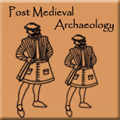
Post Medieval Archaeology is the study of the period from the 15th century to the 19th century. It is a period of great change and transformation, with the rise of nation states, the onset of industrialization and the spread of global trade. Archaeological evidence from this period reflects the development of these changes and the impact they had on everyday life. -

Modern Archaeology is the study of human activity in the past using the material remains of a culture. It is a subfield of anthropology that includes the study of artifacts, architecture, landscapes, and cultural landscapes. It is a scientific approach to the study of past cultures and societies, and often involves excavation, laboratory analysis, and other research method

